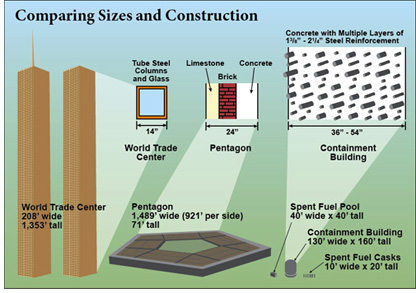 Protecting Against Aircraft Protecting Against Aircraft
Since 9/11, the issue of an airborne attack on this nation’s infrastructure, including both operating and potential new nuclear power plants, has been widely discussed. The NRC has comprehensively studied the effect of an airborne attack on nuclear power plants. Shortly after 9/11, the NRC began a security and engineering review of operating nuclear power plants. Assisting the NRC were national experts from Department of Energy laboratories, who used state-of-the-art experiments, and structural and fire analyses.
These classified studies confirm that there is a low likelihood that an airplane attack on a nuclear power plant would affect public health and safety, thanks in part to the inherent robustness of the structures. A second study identified new methods plants could use to minimize damage and risk to the public in the event of any kind of large fire or explosion. Nuclear power plants subsequently implemented many of these methods.
The NRC is now considering new regulations for future reactors’ security. The goal is to include inherent safety and security features to minimize potential damage from an airborne attack. |
